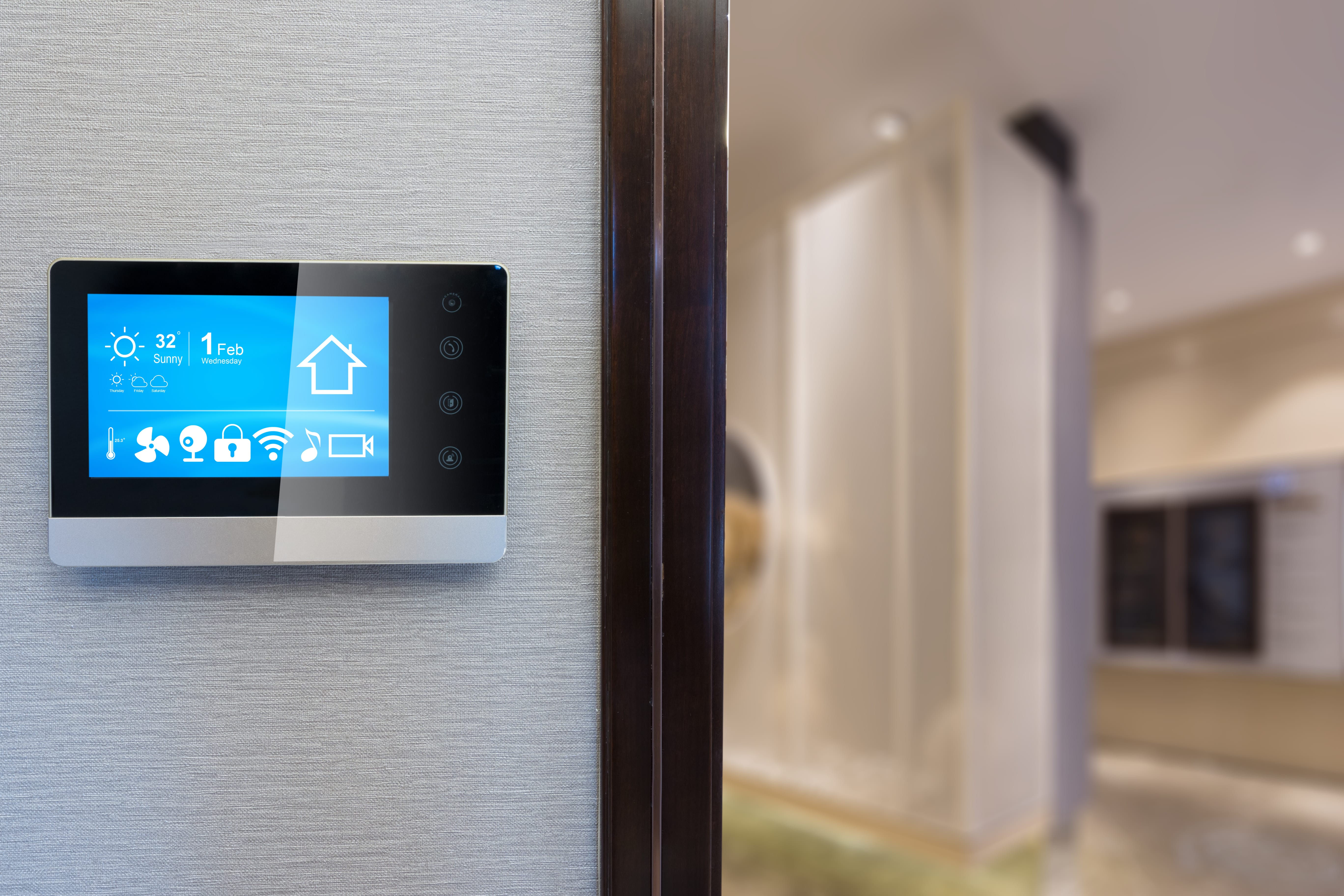Choosing a new home can be challenging, from selecting the right neighborhood to finding a space that meets your family’s needs. Whether you’re signing a lease or making a down payment on your first home, there are many things to consider before making a final decision, including the energy-efficient house features.
While a home inspection will reveal any major issues that need to be corrected, many homeowners don’t know how to evaluate energy efficiency. Determining how efficient your home is can help you save on your energy bill and find opportunities for future upgrades and improvement.
Let’s go over some of the things to look for in your potential new home to determine whether the property is energy efficient.
{{CTA-thermostat-right-plan}}
What is an Energy-Efficient Home?
While every property is different, an energy-efficient home is designed with energy savings in mind. This can include the use of specific construction materials, intentional landscaping design that takes advantage of sunlight, and energy-efficient appliances.
Many homeowners choose to do retrofitting projects to increase their home’s energy efficiency, like improving insulation or installing new windows. When you purchase a home that has been built with energy savings in mind, you can enjoy lower monthly utility bills right away. You won’t need to save up and plan for additional upgrades to reduce energy usage.
How to Measure Home Energy Usage
An energy monitor is a device that measures energy used at home by connecting to the electricity meter. You can purchase an energy monitor to determine your household energy use. If your home uses excess energy, find ways to make your home more energy-efficient.
Energy monitors provide clear home energy measurement data that can help you plan energy efficiency measures. But, there are other steps you can take when viewing new homes to determine how energy efficient it may be.
Consider the Layout & Size of Your Home
The size and layout of your home can dramatically affect its energy efficiency. A larger home uses more energy to stay at a comfortable temperature and typically has more areas where drafts and air leaks can occur.
While open floor plans are popular, they are harder to keep warm because of their expansive nature. A home with more walls and doors is easier to heat and cool and can save you money in the long run. Look for these energy-efficient design features for houses when searching for a new home or considering remodel projects.
Check What Directions Your Windows Face
Which directions your home’s windows face can significantly impact the natural light in the room and temperature control. With sunlight coming into the room, you can more easily maintain temperature without relying on your heating system.
Examine the windows in your potential new home as you plan the layout and designs of your rooms:
- South-facing windows offer the most natural light and can generate extra heat, making rooms with these windows ideal for high-traffic spaces in your home, like the living room.
- West-facing windows enjoy natural light throughout the day but may be especially hot in summer. Some high-quality window coverings, such as shades, drapes, or blinds, can help you control the temperature in these rooms.
- East-facing windows receive plenty of sunlight in the morning but very little throughout the rest of the day, so these rooms are a great option for spaces that generate heat.
- North-facing windows provide the least amount of natural light, which means they tend to be cooler.
Search for Smart Technology
More and more homes include smart technology, which allows you to automate things like home security, lighting, smart thermostats, and household appliances. You can always add smart options to your home, but if your new house already includes these items, enjoy the energy-saving benefits of smart technology immediately and save money on these upgrades.
Inspect Insulation
One of the best ways to make sure your home is energy efficient is proper insulation. This will keep warm air inside in the winter and cool air inside in the summer, avoiding extra strain on your HVAC system. Ask your home inspector to carefully look at the insulation in your new home to make sure it’s effectively doing its job. This is especially important in older homes, which may need additional insulation to maintain comfortable temperatures.
Look at Opportunities to Take Advantage of Sunlight
Many people mistakenly believe you need to power your home with solar energy to harness the energy of the sun, but architects, builders, and landscapers often factor the location of the sun into the way they design a home or lawn. When considering a new home, look for these energy-efficient house features that show it was built with solar energy savings in mind:
- Large windows facing within 30 degrees of true south, which is the direction with the most natural light
- Mature trees that bloom in the summer, which provide shade during warmer months but won’t block the sun during colder months
- Building materials, such as concrete, brick, stone, and tile, that are better able to absorb and retain solar warmth
- Roof overhangs that will shade south-facing windows during summer months when the sun is most directly overhead
Look for Energy Star Appliances
When touring a potential new home, make sure to look for the ENERGY STAR® label on the dishwasher, refrigerator, and other appliances. Products must meet strict standards to receive the ENERGY STAR® label, which helps consumers find appliances and electronics that are more energy-efficient than standard models. While you can upgrade these appliances later, finding a home that is already outfitted with ENERGY STAR® equipment allows you to tap into immediate energy savings.
Pay Attention to Ventilation
The more airtight your new home is, the more energy loss you can avoid. Even more important, a home that’s well ventilated can help protect the health of everyone who lives there, preventing problems for people with asthma and respiratory issues.
When inspecting a potential new home, look for places that may need to be caulked or weather-stripped and ask your inspector for any advice to improve ventilation. Take care to inspect the following areas, which are the most likely places for air leaks:
- Windows and doors
- Exterior wall outlet boxes
- Attic and basement walls
Review Windows, Doors, & Skylights
The quality of a home’s windows, doors, and skylights can play a big role in reducing energy use. When viewing a house or apartment, look for windows that are double-paned or have added storm windows. These will have less air leakage and keep the home more comfortable.
Thicker doors with reinforced cores also provide energy savings. Exterior doors with polyurethane foam insulation cores will keep more cooled air in the building, while sliding glass doors, especially older varieties, will often allow more air to escape. If there are glass doors, check to see if they have plastic insulators between the inner and outer parts of their frames.
While a skylight can add pleasing natural light, if it was not installed properly, it could increase energy use and allow moisture into your home. Skylights should have a slight slope to better capture sunlight throughout the day, and the seals around the glass should be in good condition to keep out rain.
Choose the Right Electricity Provider
In Texas, residents have the option to choose their electricity providers, allowing them to select the provider with the plans and benefits that best fits their needs. Gexa Energy offers electricity plans that help customers find savings and make the most of their energy-efficient homes.






































